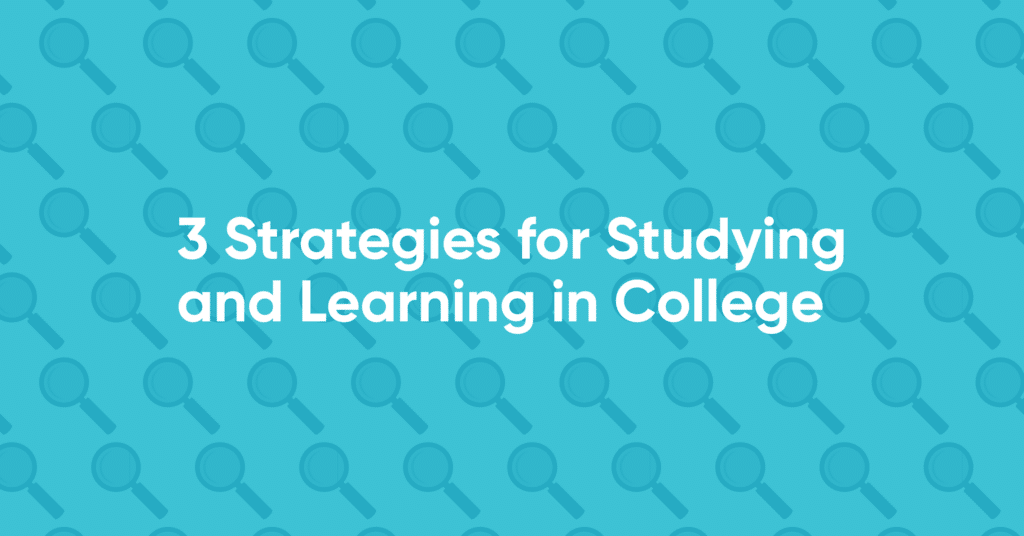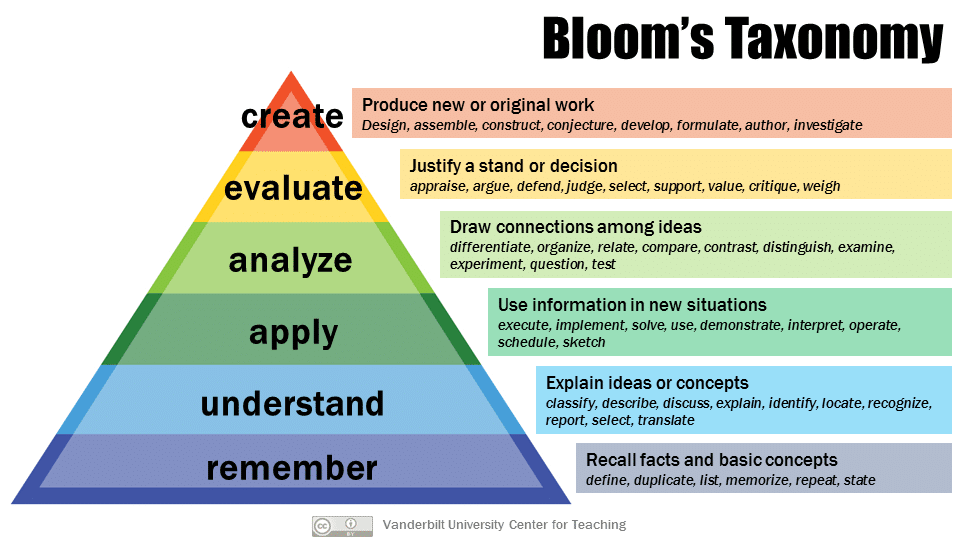
Three Strategies for Adjusting to a New Way of Studying and Learning in College
by Jason Pender
For students entering college, many things will change about their educational experience. One of the most significant changes they will experience is the expectation around learning.
In the high school system, schools are accredited by the student population’s performance on standardized tests. In the college and university system, schools are accredited by ensuring that specific learning outcomes are provided by the university and met by the students enrolled.
These learning outcomes will vary based on values and university type, but the design of the learning outcomes consistently use Bloom’s Taxonomy as the central tool used for drafting curricula across the country and in most parts of the world.

Overcoming challenges, pushing learning towards complex analysis
Becoming familiar with the details of Bloom’s Taxonomy is crucial because of the structural shift in learning expectations from high school to college that is placed on incoming college students.
Specifically, students are expected to push their learning beyond memorizing for standardized testing more towards complex analysis, well-supported evaluation, and ultimately, the creation of new ideas.
Video: Use Bloom’s to Think Critically
Typical growing pains during the transition from high school to college that are discussed in the coaching meetings as a part of Making Waves Foundation’s college success program, known as CAP, include students feeling frustrated because:
- their study strategies that earned them As in high school aren’t generating the same results in college,
- there is a lack of structure provided by the professors or there are different teaching styles from each professor,
- they don’t know what will be on their quizzes and exams, and
- they don’t know if they are doing well in the class even when they are more than halfway through the term.
Bloom’s Taxonomy is a great tool that can address all these concerns and challenges so many students face during their time in college.
Here are three specific ways to consider Bloom’s Taxonomy as you plan for your college coursework and for studying for your midterms, finals, or other exams.
1. Use your syllabi to create learning roadmaps for coursework, papers, and exams
For starters, students can use Bloom’s Taxonomy to filter the syllabus of each class they take. This is useful because students can identify the assignments they have for the term in each class and what level of learning can be expected for each assignment.
For example:
- Posting to a discussion board after a reading assignment is typically operating at the understanding level, and responding to other classmates’ posts is at the analysis level.
- Midterm exams require remembering, understanding, analysis and often evaluation of multiple concepts at the same time.
- Final papers, projects and exams typically require all the levels as they are ultimately asking students to provide evidence that they have full comprehension of all the materials in the course to the point that they can apply the content in such a way to create a new understanding or statement on the subject.
In addition, by reviewing the entirety of each class and using Bloom’s Taxonomy as a filter to identify the learning “roadmap” of the term, a student can plan out their time to ensure they are not only giving themselves enough time to learn the material but also have a sense of how much time each assignment may take and how to balance out their entire course load.
2. Breakdown prompts in assignments to understand expectations for different levels of learning
Another way Bloom’s Taxonomy is useful for students in that it serves as a decoding tool during exams and when breaking down prompts in assignments.
As you can see in the graphic above, there are keywords associated with the different levels of learning. Words like define, list, state are all found in the remembering level. Those types of words are found on prompts for homework, multiple choice questions, and true-false questions.
Application based questions use phrases like solve, interpret, and demonstrate, and will require that you not only know details, but how they connect together and in which context they are appropriate to use. Students will see these words in their prompts for classroom discussions, online posts, and short answer questions on exams.
Finally, end of the term papers, projects and presentations require the highest order levels of thinking. Students are expected to compare and contrast, defend positions, and evaluate information to determine which answer is the most correct out of several correct responses, and ultimately contribute new ideas beyond what has been taught in the course.
3. Evaluate progress and seek support
Decoding the roadmap of each class over time, and deconstructing assignments and prompts can be very useful for success in college. But, perhaps even more important, Bloom’s Taxonomy provides a way for students to self-evaluate their own learning.
Using the different levels of learning to monitor their own progress can inform students on exactly what they need to do to perform at their full potential.
Moreover, they can learn how to ask for specific help and support from CAP coaches, classmates, mentors, tutors, and professors during office hours. During those meetings they can communicate the level of learning they have achieved on their own and what they may still need to be shown an additional time to fully learn the materials.
Additional Study Tips and Strategies
Video: The Perfect Mindmap: 6 Step Checklist
Video: 5 Techniques of Every Successful Student
Jason Pender
ABOUT MAKING WAVES FOUNDATION
With a unique focus on college attendance and graduation, Making Waves Foundation supports historically underrepresented and underserved students in pursuing their dreams. Making Waves Academy is a public charter school in Richmond, California, educating more than 1,100 students and Making Waves Foundation’s college success program, known as CAP, provides coaching, scholarships, financial literacy, and career support for more than 500 college students as well as a network for more than 500 Wave-Maker alumni.

